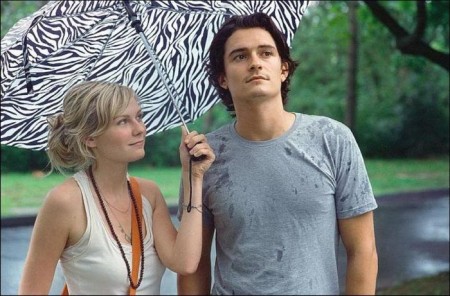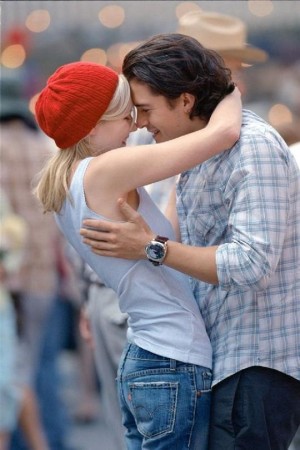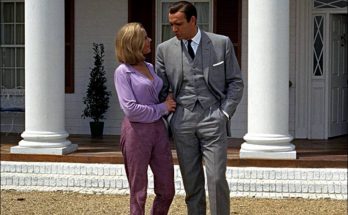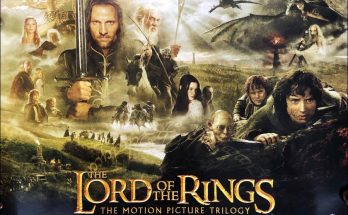The Road to Elizabethtown. Elizabethtown is a real place, 45 miles south of Louisville. The town itself had no real significance to the project until Crowe began his research.
“When I was a lot younger and writing for Rolling Stone, I’d be in a place like Arkansas or Oklahoma or Texas and fans would come up to me and say, `Why doesn’t your magazine write about people here? Are you going to mention our city in your movie?’” relates Crowe. That idea – to focus on people who live outside New York or Los Angeles – was one more inspiration for “Elizabethtown.” “I didn’t want to write a story that could only happen in a huge city that everybody knows. I thought, `What about the people in-between? What about the people in Elizabethtown, Kentucky?’”
Shooting “Elizabethtown” in Kentucky in the summer was extremely important to Crowe. The “otherworldly heat and deep humidity,” as described in the script, is such an important part of the story that the director did not want to think about shooting anywhere else at any other time. Almost all of the lead actors had never been to Kentucky and the introduction to that environment set the tone for the film.
“Cameron’s screenplay is infused with the references to a specific place: it eloquently describes the bluegrass, the cicadas, and otherworldly heat,” says Paula Wagner. “There was no question that we had to shoot in Kentucky: it was the best way to be honest to the story. We were treated so well by the people there and hopefully shooting in Kentucky further illuminated the beauty of the characters and this magical place.”
Elizabethtown is a real place, 45 miles south of Louisville. The town itself had no real significance to the project until Crowe began his research. He came upon Elizabethtown and the name struck a chord with him. “I loved the name… and after never having a title for `Almost Famous’ until the last minute, I wanted to say, very early on, `The name of this movie is “Elizabethtown.”’” The town is also midway between Louisville and Nashville, TN – a road that provides an opportunity for Drew and Claire’s second face-to-face meeting. “I really like that corridor of travel and I like the idea that the two characters live along that road,” recalls Crowe.
The crew spent six weeks in Kentucky, shooting some of the most significant scenes from the film in the Louisville and Lexington areas. The production’s base was located in Louisville and immediately upon their arrival, the cast and crew warmed to the city. As Crowe puts it, “Louisville, Kentucky is infectious… it is not quite a huge city and not quite a small town – it is a young adult of a city and you’ll feel its character in the movie.”
From the very beginning, Crowe had a distinct vision for the look of “Elizabethtown.” He and production designer Clay Griffith used several artistic resources to refine the look. They talked at length about the work of Norman Rockwell and the way it depicts America and family; for Griffith, Rockwell was always the “centerpiece.”
In addition, the filmmakers were also heavily influenced by the black-and-white photography of Robert Frank, Elliott Erwitt, and Gary Winogrand. These artists all made photographs in the 1950s, `60s, and `70s that captured moments of America, Americans, and Americana that were the inspiration for many of the more poignant moments during production.
Cinematographer John Toll was responsible for bringing this look to life. Toll, who had shot the film “Simpatico” in Kentucky, was thrilled at the opportunity to return to the area. “Elizabethtown” marks Toll’s third collaboration with Crowe. “In my heart, I know this is the one we were both most suited to make together,” says the veteran cinematographer.
The beauty of Kentucky in the summer came through on-camera and off. Throughout the location shoot, local people would gather with lawn chairs, cameras and items for autographed keepsakes as they respectfully watched the filmmakers at work. Everywhere the production visited, they were greeted with warmth, civility and excitement. This response served to reaffirm the decision of the filmmakers to shoot in Kentucky.
After shooting several scenes in Elizabethtown, Versailles, and Louisville, Kentucky, the production began filming Drew’s “Sojourn,” the emotional heart of the film and its climax – the road trip that Drew takes with his father’s remains. The production was pared to 100 essential members as crew flew to and filmed in four different states in six days.
First stop was Memphis, Tennessee, where the production schedule dictated shooting in three separate locations in one short day: The Arcade Restaurant – where Drew samples “the greatest chili in the world”; Earnestine and Hazel’s Blues Bar; and the National Civil Rights Museum, the last built utilizing the façade of and parts of the Lorraine Motel, where Martin Luther King was assassinated in 1968. The Museum (opened to the public in 1991) was built to preserve the historic site and chronicle key episodes of the American civil rights movement in order to inspire participation in civil and human rights efforts globally through their collections, exhibitions, and educational programs. Crowe had visited the Lorraine in the 1980s and had never forgotten the experience.
The second stop on the Sojourn was Eureka Springs, Arkansas, and Dinosaur World. A sprawling 65-acre park boasting over 90 life size prehistoric replicas, Dinosaur World was built in 1972 and billed as “The World’s Largest Dinosaur Park.”
The crew then traveled to Beaver, Arkansas (population 95), to shoot on a beautiful yellow suspension bridge that runs over the White River. Built in 1949, the Beaver Bridge is considered a historic bridge of the Midwest. The crew’s arrival was likely the most exciting thing to happen in Beaver in quite a while – with the number of crewmembers nearly eclipsing the total population of the town.
By far, the most powerful moment of the trip was experienced at the Oklahoma City National Memorial, built on the site of the Alfred P. Murrah Federal Building that was destroyed by a bomb on April 19, 1995. Director Cameron Crowe had always envisioned this location as part of his story. The afternoon was spent shooting five scenes throughout the Memorial.
The crew then flew to Scottsbluff, Nevada, and the national monument there for a series of interior and exterior shots of Drew in his car as he continues his road trip. The sequence would be Drew’s long-delayed emotional breakthrough… finally he would cry over the loss of his dad. These were intense shooting days, days Bloom had planned for and had come to crave. Crowe says, “The Nebraska sky is beyond words… it naturally fills you with thought and a sense of where you fit in the big picture.” The last shot of the sequence is at sunset on a mountain peak overlooking the Platte River as Drew walks to the tip of the overlook.
Bloom’s experience allowed the actor to see more of the United States than he had ever imagined and although he was impressed with every aspect, he still had a desire to see more. He decided to forego the flight back to Los Angeles the next day and take his own road trip home from Scottsbluff. “I just took my dog and we got in the car – just hit the road.” As the trip progressed, the actor was struck by “how phenomenally beautiful and vast this country is.” Upon his return, Bloom reflected, “It was an amazing experience -a road trip of my own that helped with the character of Drew. It gave me a bit of clarity.”
Views: 115




